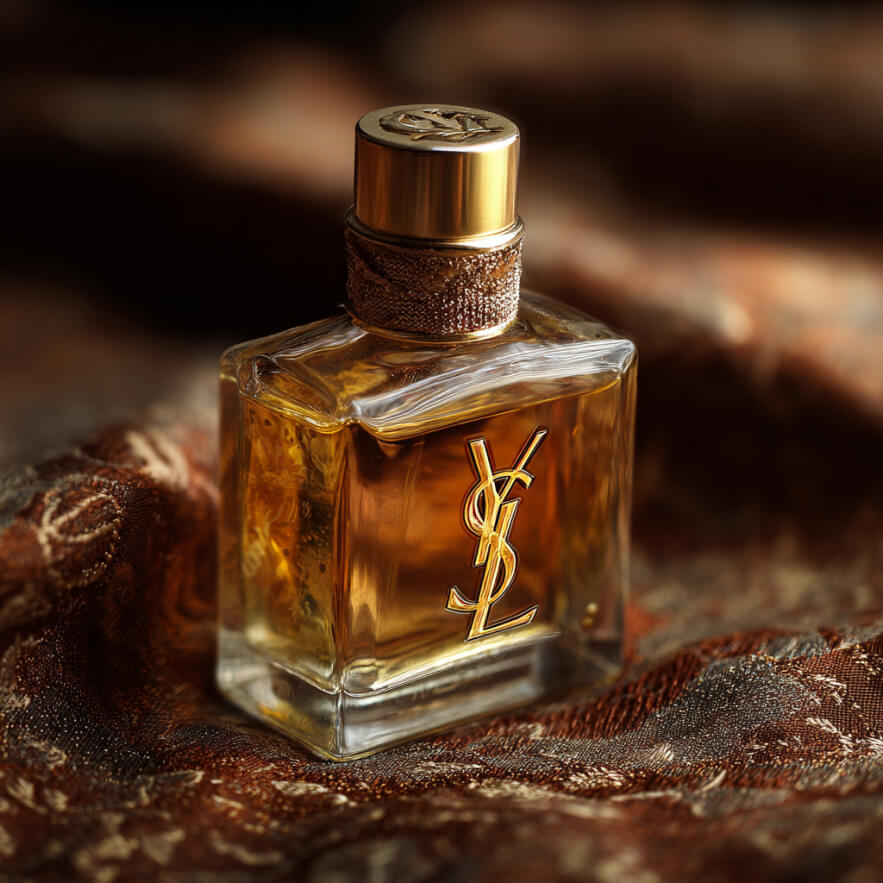Perfume packaging is not just a shell. It works like a prelude to the fragrance, setting the mood and shaping expectations before the first spray. It can tell you what the scent might be — bold or gentle, warm or cool, complex or minimal. Elements we often overlook — closures, caps, fabric, form — carry not only aesthetic but also functional and symbolic meaning. In niche and artisanal perfumery, every detail is part of the story.
The cap as an extension of the composition
Many see the cap as a trivial detail. But it’s often the first tactile impression of a scent. Its weight, material, and shape help tune our expectations. A heavy metal cap signals a deep, dense fragrance. A light plastic one often accompanies airy and transparent compositions. Of course, there are exceptions — visual lightness may hide a bold, woody-amber structure. Designers use such contrasts to add surprise and intrigue.
Modern perfume houses often use magnetic caps. This is not only elegant and practical but also a signal of attention to detail. The magnetic click becomes a kind of ritual — a moment of closure. Some perfumers say the sound of closing the bottle is as important as the top note. It finishes the act of applying perfume, sealing it in time.A growing trend is cap customization: users can choose the type of cap separately from the bottle, adjusting the tactile and visual perception. This is especially popular among collectors who view perfume as art, not just scent.
Closures and mechanisms: from protection to aesthetic
Bottles with locks are rare, but in niche perfumery they become symbols of something intimate or hidden. For example, a bottle with a tiny key stored in the box says: “This is not for everyone.” These often belong to limited editions and appeal to connoisseurs. Here, the lock becomes a metaphor for personal access.
Another clever approach uses twist or push mechanisms, often seen in bottles inspired by vintage gadgets, Art Deco, or steampunk. Engineering becomes part of the design. Touching, twisting, discovering — the user becomes part of the process. Perfume becomes not just something you wear, but something you interact with.
Some bottles feature locking atomizers, particularly useful for travel-sized luxury scents. These mechanisms prevent accidental spraying while preserving pressure. Far from disrupting the design, they add confidence — a small functional detail with a big emotional impact.
Designers sometimes intentionally disrupt symmetry. Closures or buttons may be slightly off-center or require a second look. This creates a sense of discovery, turning even a mass-produced product into something personal and memorable.
Texture and fabric: signals of sophistication
Many assume the box is just for protection. But today, textures and materials are used as narrative tools. Velvety flocking, silk linings, coarse linen, microfiber suede — all these elements build associations even before the fragrance is revealed. Fabric becomes a tactile bridge between skin and scent.
For example, velvet is common with perfumes evoking coziness or intimacy. Linen often appears in collections inspired by nature, silence, or Nordic aesthetics. Silk wraps typically accompany oriental scents — full of richness and sweetness. Italian houses sometimes use leather; Japanese brands may feature handmade paper with organic fibers.
It’s especially interesting when the inside of the box contrasts in texture with the outside. This creates a shift: from outer world to inner space, from public to personal. A sensory transition that prepares both body and mind to engage with the scent.
One collector tip: reuse luxury boxes not only for storage but also as decor. Many use them as jewelry cases, display pieces, or even combine several for fragrance installations on shelves.
Form and proportion: the unspoken message
The geometry of a bottle or box delivers a visual message. Tall, narrow forms suggest structure and clarity. Square or rectangular designs speak of stability. Asymmetric, slanted, or rounded shapes evoke emotion, movement, or improvisation.
A growing trend is visual misdirection — where a bottle looks heavy but holds little, or feels small but contains more than expected. This plays with perception and turns opening a bottle into a micro-exploration.
Some brands apply architectural principles: bottles that resemble columns, arches, or concrete blocks. This is common in fragrances inspired by cityscapes, minimalism, or technology. Others lean into organic forms — hourglasses, raindrops, stalactites — drawn from nature and the passage of time.
Even box size matters. Small boxes feel personal; larger ones feel like gifts. Some brands create multi-layered packaging, where the bottle is nested within two or more shells. This amplifies a sense of ritual, protection, and even sacredness.
Sound, weight, resistance: the details only true connoisseurs notice
Some details are hard to measure but impossible to miss. The click of a cap, the resistance when opening a box, the airflow from the first spray — all of these are sensory cues of quality. True fragrance lovers notice how the cap sounds, how evenly the mist spreads, how the atomizer responds to pressure.
Design that appeals to multiple senses doesn’t just feel luxurious—it measurably influences purchasing decisions. Studies in consumer neuroscience show that aesthetic packaging activates reward centers in the brain, leading to stronger emotional attachment and willingness to pay more
Weight also matters. It shapes perceived value. A lightweight bottle can feel underwhelming, while a heavier one feels prestigious — even when the volume is the same. It’s an illusion, but a powerful one.
Atomizers vary too — from precise, firm sprays to soft, cloud-like diffusion. The choice depends on the fragrance style: bright openings benefit from misty dispersion, while richer scents might work better with tight, measured spritzes.
If you’re curious how scent becomes truly personal, check out Personal accord: how your skin sounds in a unique fragrance — it explores how skin chemistry makes each perfume one of a kind.
Pay attention to the sound of the cap, the smoothness of the sprayer, the interior finish, and the tactile quality of materials — these elements never lie.
Yes. It protects the bottle, creates emotional value, and adds a sense of ritual — especially important in collectible perfumery.
If the packaging is well made — definitely. It can serve as storage, décor, or even increase value in case of resale or display.

